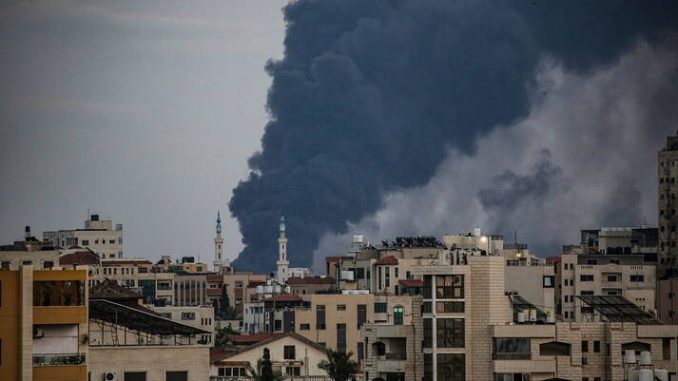
Introduction
In May 2021, the world witnessed an 11-day conflict between Israel and the Palestinian militant group Hamas, which culminated in a ceasefire brokered by international mediators. The conflict, marked by airstrikes, rocket attacks, and widespread destruction, resulted in the loss of numerous lives and brought to the forefront the long-standing Israeli-Palestinian conflict. This article explores the events leading up to the ceasefire and the implications for the region.
The Escalation: A Timeline
The recent conflict was characterized by a series of escalations:
1. Sheikh Jarrah Dispute: The tensions began in East Jerusalem, where Palestinian families faced eviction from their homes in the Sheikh Jarrah neighborhood. This dispute ignited protests and confrontations between Palestinians and Israeli security forces.
2. Al-Aqsa Mosque Clashes: Clashes between Palestinian protesters and Israeli police escalated at the Al-Aqsa Mosque compound, one of Islam’s holiest sites. The situation worsened as police used stun grenades and rubber bullets against protesters, leading to injuries.
3. Rocket Attacks and Airstrikes: On May 10, Hamas militants in Gaza launched a barrage of rockets towards Jerusalem in solidarity with Palestinians in East Jerusalem. Israel responded with airstrikes on Gaza, targeting what it said were Hamas military installations and leaders.
4. Civilian Casualties: The conflict took a devastating toll on civilians, particularly in Gaza, where densely populated areas suffered extensive damage. Hospitals, schools, and residential buildings were hit, leading to civilian casualties, including children.
5. International Diplomatic Efforts: International actors, including Egypt, Qatar, the United States, and the United Nations, engaged in diplomatic efforts to broker a ceasefire. Multiple rounds of negotiations took place during the conflict.
The Ceasefire Agreement
After 11 days of intense conflict and international pressure, Israel and Hamas agreed to a ceasefire on May 20, 2021. The ceasefire brought a temporary halt to hostilities and the widespread destruction but did not address the underlying issues at the core of the Israeli-Palestinian conflict.
The terms of the ceasefire included mutual de-escalation and humanitarian efforts to address the urgent needs of Gaza’s population, including medical assistance, reconstruction, and humanitarian aid.
Implications and Challenges
The ceasefire marked a temporary respite in a conflict that has persisted for decades. However, the underlying issues, such as the status of East Jerusalem, Palestinian statehood, and the rights of Palestinian refugees, remain unresolved. The ceasefire did not address these core concerns, leaving the potential for future escalations.
The conflict also strained diplomatic relations, particularly between Israel and the United States, which remains a key ally of Israel but called for a ceasefire. The situation underscored the complexities of achieving a long-lasting peace in the region and the need for renewed diplomatic efforts.
Calls for Lasting Peace
International leaders and organizations have called for a lasting and comprehensive peace agreement that addresses the legitimate aspirations and rights of both Israelis and Palestinians. Achieving a just and enduring solution to the Israeli-Palestinian conflict remains one of the most challenging and significant diplomatic endeavors in the world today.
The ceasefire, while providing immediate relief to those affected by the recent violence, serves as a stark reminder of the urgent need for a political resolution that can bring stability and security to the region. The world continues to watch the situation closely, with hopes for renewed efforts to find a lasting and equitable solution to the Israeli-Palestinian conflict.